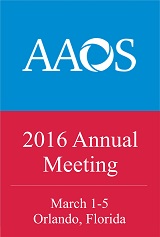
AAOS 2016: Interference screw vs suture anchor fixation for biceps tenodesis alongside RCR

AAOS 2016: Interference screw vs suture anchor fixation for biceps tenodesis alongside RCR
Which Method is Better for Biecps Tenodesis? Prospective Randomized Comparaive Study
CONFERENCE ACE REPORTS
This ACE Report is a summary of a conference presentation or abstract. The information provided has limited the ability to provide an accurate assessment of the risk of bias or the overall quality. Please interpret the results with caution as trials may be in progress and select results may have been presented.
Synopsis
80 patients undergoing arthroscopic rotator cuff repair with concomitant biceps tenodesis were randomized to either interference screw (IS) fixation or suture anchor (SA) fixation. The purpose of this study was to compare the clinical and anatomical outcomes between fixation methods for at least 12 month follow-up. Findings indicated that VAS pain, ASES form, Simple Shoulder Test, Constant score, ...
To view the full content, login to your account,
or start your 30-day FREE Trial today.
FREE TRIAL
LOGIN
Forgot Password?
Explore some of our unlocked ACE Reports below!

Learn about our AI Driven
High Impact Search Feature
Our AI driven High Impact metric calculates the impact an article will have by considering both the publishing journal and the content of the article itself. Built using the latest advances in natural language processing, OE High Impact predicts an article’s future number of citations better than impact factor alone.
Continue



 LOGIN
LOGIN

Join the Conversation
Please Login or Join to leave comments.